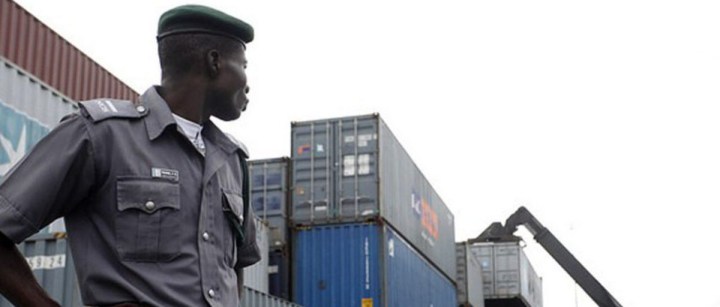ISS TODAY
Can smart ports curb drug trafficking?

Covid-19 measures are making maritime routes the preferred target for drug smugglers. But there are solutions.
First published by ISS Today
Seizures of large quantities of drugs such as cocaine, heroin and others at seaports have risen worldwide. The increase in shipping operations coupled with large container ships doubling in size in the past couple of years has provided an attractive mode of transport for drug traffickers.
African ports are also subject to this global trend as shown in major seizures at seaports in 2019. At the Port of Dakar, 798 kg of cocaine were confiscated – the largest drug haul made at this port. And in Mauritius harbour, 90 kg of cocaine was seized.
According to the latest United Nations Office on Drugs and Crime (UNODC) report, drug supply chains were disrupted in countries that opted for hard Covid-19 lockdown measures.
This pushed up demand and prices.
The reduction in air traffic and increased security on roads due to Covid-19 restrictions have redirected drug shipments to the sea and authorities are struggling to respond.
Innovative technologies found in smart ports could well be the answer.
According to the report, between January 2017 and April 2020, 88% of cocaine, 54% of cannabis and 37% of amphetamines were transported by sea.
As the pandemic continues, this trend is likely to increase globally and become more prominent in Africa, although information remains scarce.
The UNODC says 92% of opioids were transported by land until hard lockdowns and more policing along the roads caused heroin traffickers to increasingly use the southern route. This is the maritime route from Afghanistan to Europe through African ports.
Cargo ships are preferred as they provide the safest options for drug traffickers.
These vessels are the cheapest mode of transport because around 90% of global trade is seaborne. Drug traffickers conceal the drugs among other products, making them almost impossible to detect.
A popular tactic is to hide drugs between fruit and vegetable shipments as these are handled faster due to spoilage risks.
The likelihood that a container will be searched is low – on average around one in 10 due to the sheer volume of transported goods. Port operators are under pressure to process huge amounts of cargo in short spaces of time.
Increasing the number of containers checked before loading seems like an obvious solution that would push up the risk for traffickers or smugglers. However, it isn’t that simple. While the probability of detecting illicit cargo would increase, shipping operations would slow down, meaning higher costs that most operators try to avoid.
Dwell-time in African ports is already on average longer than two weeks. Inefficiencies and high logistical costs from a further slow-down of operations would negatively affect supply chains and in turn, economies.
This presents a security versus efficiency dilemma for law enforcement and port operators alike.
The problem could be resolved by using and integrating innovative technologies found in smart ports. A smart port relies on solutions such as automation, artificial intelligence, big data, internet of things and blockchain.
For example, the Port of Busan in South Korea – as part of the ongoing digital transformation – will integrate a blockchain terminal-to-terminal cargo transit system which is expected to prevent smuggling.
Digitalisation improves the efficiency and effectiveness of port operations while increasing security and resilience against traffickers.
In theory, this produces a maritime ecosystem defined by greater cooperation between all those involved in port operations. This includes streamlining logistics and shipping processes.
However, there are challenges. One is the high cost of new technology needed for such a shift. Staff training and additional human resources expenses also need to be factored in.
One of the technologies used in detecting illicit goods is the non-intrusive inspection scanner which costs around R15-million ($1-million). Charges for civil construction, scanner tarmac, fencing and security equipment are around R2-million ($130,000). After adding the cost of staff to operate the facility and regular maintenance, the total is around R20-million ($1.3-million).
New technology may also expose the port to new cyber risks and vulnerabilities. For instance, in 2017 criminals breached the IT system of the port of Antwerp to smuggle drugs into the country.
The change is also likely to lead to crime displacement and may not disrupt trafficking in isolation. Nevertheless, technological solutions are a step in the right direction and an important part of a broader approach to addressing drug trafficking.
The digital transition process in Africa will probably be gradual and incremental but should pick up as technology becomes cheaper and more accessible over time.
Port operators need to approach the integration proactively and plan each step ahead of time.
Drug trafficking networks are staying ahead of law enforcement by using ports as key hubs. The growing demand for illicit drugs and the impact of Covid-19 lockdowns suggest that seaports will continue to be targeted by drug trafficking networks.
Balancing security and efficiency at seaports will be crucial.
For African states, the challenge is even more complex. They need to match strategic investments in port infrastructure with curbing drug smuggling and harnessing the power of smart technology. DM
Richard Chelin, Researcher, ENACT and Denys Reva, Research Officer, ISS Pretoria

















 Become an Insider
Become an Insider
Comments - Please login in order to comment.